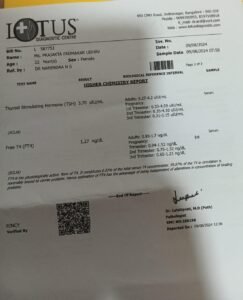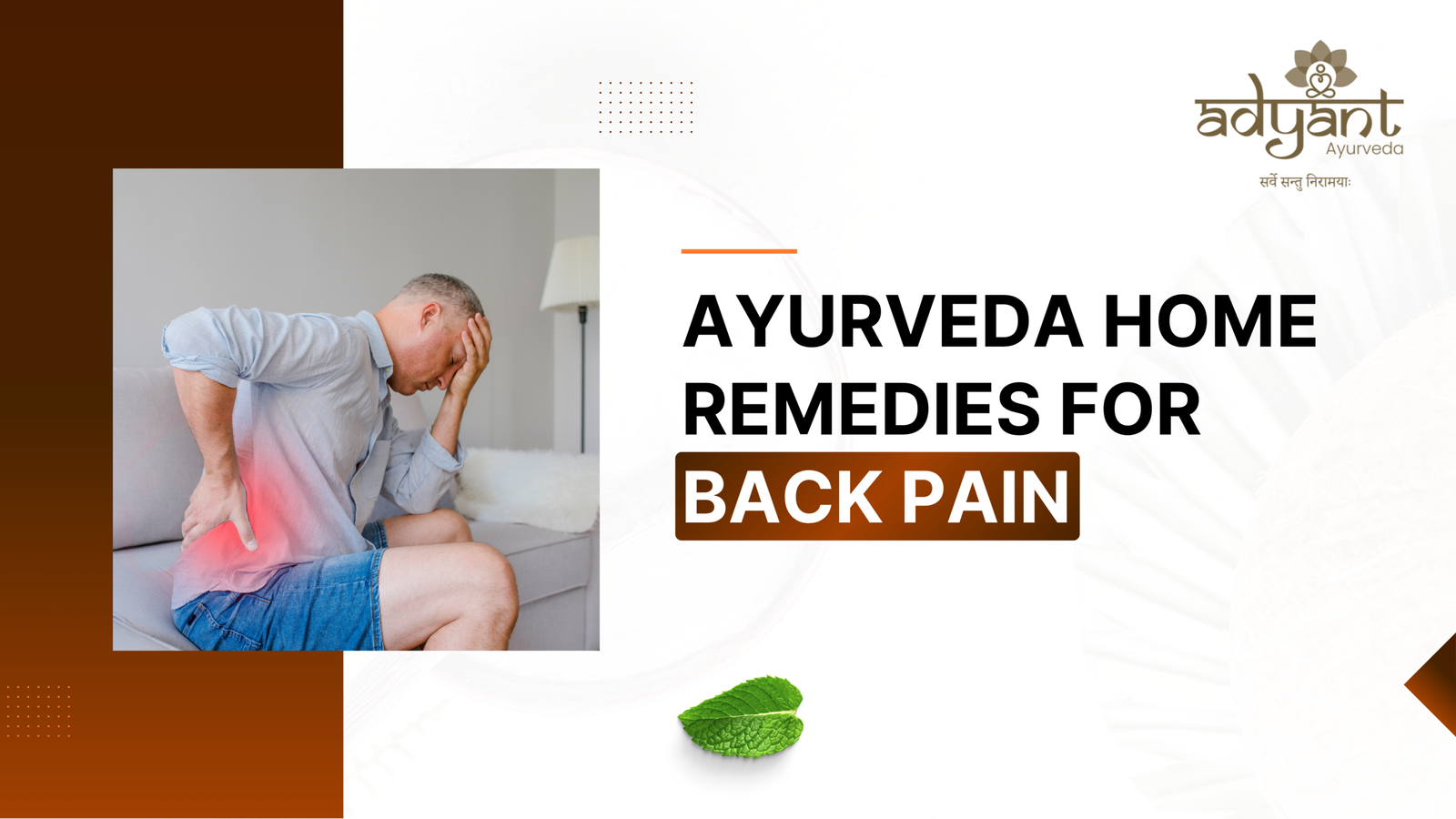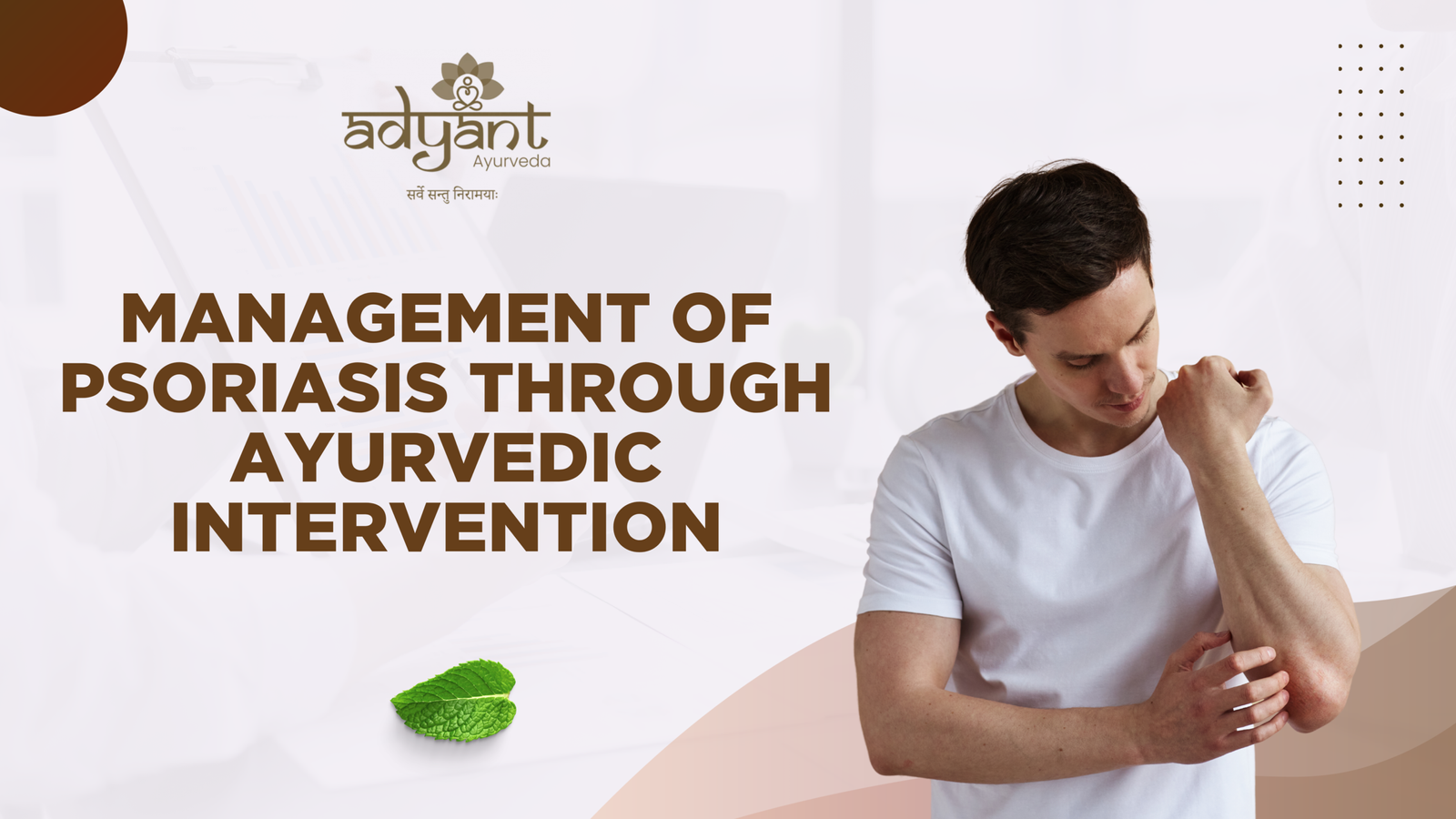Table of Contents
ToggleAbstract
Hypothyroidism is one of the common complaints nowadays, seen irrespective of the age and gender. It is prevalent commonly among the young adults, especially in the age group of 20 to 35. Often seen accompanied with PCOD/PCOS and infertility issues, hypothyroidism poses a serious health hazard if left untreated. There is also a misconception among common man that once we start the medicine for hypothyroidism, it has to be taken lifelong.
Ayurveda treats this as an imbalance of dhatvagni – a classical indication of vitiation of pitta in the body. Virechana is one of the panchakarma therapies aimed at balancing the pitta dosha predominantly along with vata and kapha doshas. This case study shows how just one course of classical virechana helps in bringing back the increased TSH level to normal.
Introduction:
Case Presentation:
A 31-year-old female patient visited Adyant Ayurveda Bengaluru with complaints of irregular menstrual cycle, increased weight and feeling fatigued and lethargic. She also had reduced appetite and finding it difficult to conceive due to irregular periods.
Treatment Protocol:
The Ayurvedic physicians at Adyant Ayurveda planned a treatment protocol of first subjecting the patient to virechana as it is the basis for any further treatments. The patient was asked to get the TSH levels done at a local lab.
Virechana Procedure:
The first step of Deepana -Pachana was done with Agnitundi vati, Chitrakadi Vati and krimikutara rasa for 5 days followed by ghritapana with Guggulu Tiktaka Ghrita in incremental dosage for 4 days and then abhyanga and steam for 3 days ending with virechana (loose motions) on the final day. The patient had 14 vegas of loose motion which is considered to be a Madhyama Shuddhi.
| PROCEDURE | FROM | TO | MEDICINE |
| Deepana-Pachana | 18/7/24 | 22/7/24 | Agnitundi Vati 2 TID(Before food)
Chitrakadi vati 2 TID(After food) Krimikutara rasa 2TID(After food) |
| Snehapana | 23/7/24 | 26/7/24 | Guggulu tiktaka Ghritha |
| Abhyanga + Sweda (3 days) | 27/7/24 | 29/7/24 | Ksheerabala Taila (Body)
Bramhi + Bhringamalaka Taila (Head) Dasamula Kwatha for Nadi Sweda |
| Virechana | 29/7/24 | Trivrit Leha(45gm) |
Results:
The patient felt very much better after the virechana procedure with feeling extremely light, good appetite and had her periods also with proper flow. The patient was again asked to get the TSH levels done. The TSH from before virechana was 5.23 which reduced to 3.70 post treatment. The free T4 which was 1.44 pre treatment had also come down to 1.27 post therapy.
Discussion and Conclusion
As per the popular Ayurvedic theory, the root cause of all diseases is Agnimandya (reduction of agni) (sarve api rogaaha mande agnau) and if this agni is treated, results in combating the disorder effectively. Virechana is the widely accepted procedure in diseases related to pitta dosha and agni imbalance and hence proves to correct the hypothyroid disorder also.
Before:

After:








